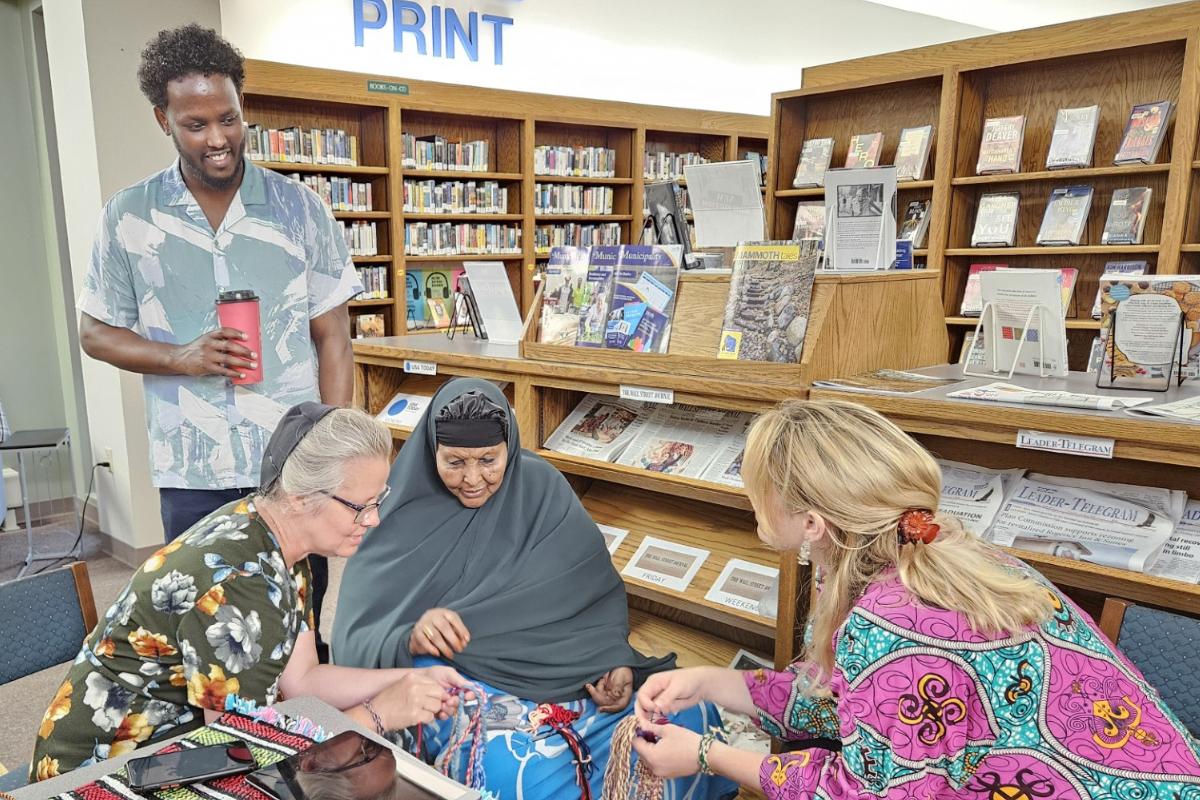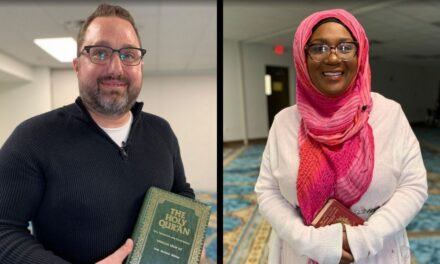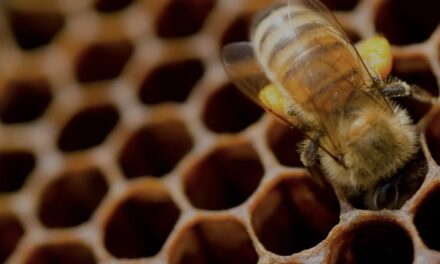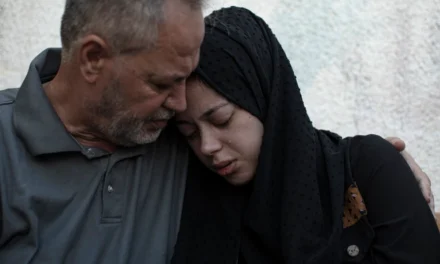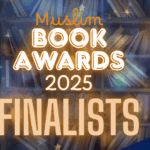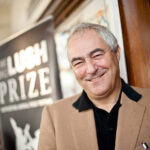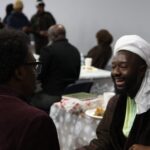Sallie Anna Pisera spent time in the Barron area visiting family when she was growing up. In fact, it was her aunt Theresa who connected her with a place called Pioneer Village. Run by the Barron County Historical Society, the village museum has been preserving and interpreting the history of Northwestern Wisconsin for over sixty years. In her career as a folklorist, Sallie Anna had worked with tradition-bearers from Nordic and Somali backgrounds, both in the United States and also in Norway. She knew about the Barron area’s Scandinavian heritage and about the Somali community that has grown up around Barron since the late 1990s.
Sallie Anna says, “I’ve always found the transnational connection between these two communities very interesting. Somali people make up one of the largest African immigrant groups in the Nordic countries, and also some of the largest Somali diaspora communities are found in the midwest and places that were home to large numbers of immigrants from Norway and Sweden in the previous century.”
In 2022, Sallie Anna received a postdoctoral research fellowship at the UW-Madison Center for the Study of Upper Midwestern Cultures. Over the next couple of years, her research explored the relationships between these neighboring ethnic communities, which represent two eras in Wisconsin’s immigration history. She explained, “Barron was an interesting place to focus on because of its rural identity. It was also a community where I had connections and where I felt my work could have the most impact.”
Partnering with Pioneer Village felt natural. The director, Tammy Shutz, is one of WH’s 2024 Community Powered Fellows and has lots of experience creating inclusive local history programs! As the longtime leader of Pioneer Village, Tammy had been wanting to make more connections with more recent immigrant groups in the area. So together they applied for and were awarded a WH grant for “Interwoven Roots and Routes: Somali and Scandinavian Heritage Events in Barron County.” The series has included an intercultural field trip for local schools at Pioneer Village and a weaving workshop featuring Somali and Nordic-American craftswomen at the Barron Public Library. In July, Pioneer Village will host“Interwoven Roots & Routes: An Intercultural Festival of Somali and Scandinavian Heritage.” The festival will demonstrations, performances, and talks from practitioners of Somali and Nordic heritage arts. Everyone is invited for a day of interactive learning about Wisconsin’s people, stories, and cultures!
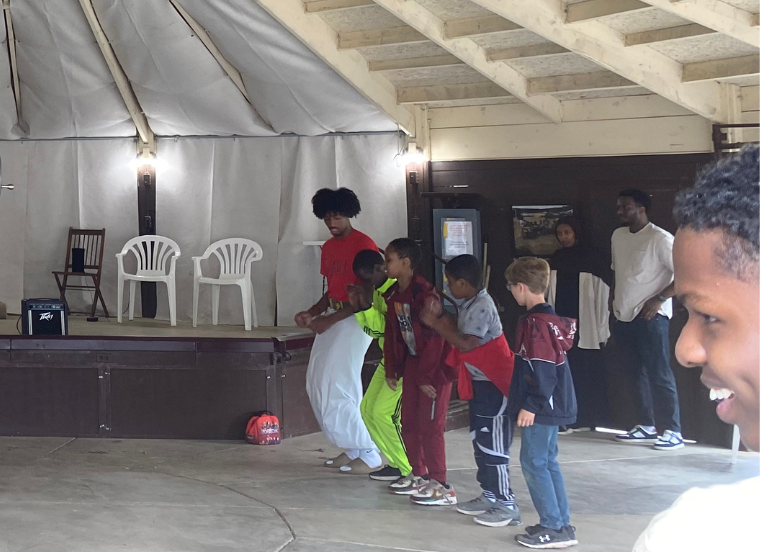
“Interwoven Roots and Routes: Somali and Scandinavian Heritage Events in Barron County” intercultural field trip for local schools at Pioneer Village. This event was funded in part by a grant from WI Humanities. Photo by Chrissy Widmayer.
Bringing people together for shared experiences and to learn more about traditions that continue to evolve within Wisconsin communities.
The project director of “Interwoven Roots and Routes: Somali and Scandinavian Heritage Events in Barron County” shares the origin and impact in Northern Wisconsin.
WH: How would you describe the project to someone who hasn’t been to Barron County or the Pioneer Village Museum?
Sallie Anna: Barron County is a rural community in Northwestern Wisconsin where people’s daily lives have long revolved around agriculture and industry. This was true for immigrants from Norway, Sweden, and Denmark in earlier generations, who established farms and who often worked in logging. And it is true today for refugees and immigrants from Somalia, who come to Barron primarily to work at the Jennie-O turkey processing plant. These ethnic communities have contributed a lot to the cultural life of Barron, and they are present in some of the institutions that you can see around town: for example, Lutheran churches founded by Norwegian immigrants, and an Islamic Center – a more recent addition brought by the Somali community – located right off the main road as you drive into town.
Pioneer Village Museum is a local institution that presents the history and culture of the area. Pioneer Village features a number of historic buildings that were moved to the site from different places around the county and are now clustered together in a “village” setting. The museum also has a number of exhibit halls showing artifacts dating from County’s founding in 1859 (then called “Dallas”) to the more recent past. For a long time, Pioneer Village has focused on portraying settlement-era history, which involves a lot of the Scandinavian immigrant history of the area. Many of the historic buildings featured on site were built by Scandinavian immigrants in the late 19th and early 20th centuries, and the museum even has a special Norwegian Room and an annual Midsommar Festival, both of which are hosted in collaboration with the local Sons of Norway – Dovre Lodge.
More recently, Pioneer Village has been making efforts to connect with Indigenous and new immigrant groups in the area and to host events featuring those heritages. “Interwoven Roots and Routes” is part of that effort. I think that by blending presentations of Scandinavian heritage – which Pioneer Village and its community know well – with presentations of Somali heritage – which is very much present in the community but which has not been formally presented in this way by local institutions – we have the opportunity to cultivate the kind of inclusive programming which Pioneer Village is trying to move towards.
WH: Can you describe how you started working within the two communities to plan the project and events?
Sallie Anna: This program series is the result of ethnographic research I have been engaged with in Barron and also in Minneapolis over the past two years. During that time, I’ve gotten to know the community in Barron in a new way, focusing on the Somali community and also on Scandinavian-American people who are the descendants of immigrants who came to Barron County in the late 19th and early 20th centuries. Through my fieldwork, I’ve gotten connected with local museums like Pioneer Village Museum and the Chetek Area Museum; with community organizations like the Sons of Norway – Dovre Lodge; with local Somali businesses like Bushra Shop; and with Somali people and their allies who work in the school system and in local government. All of these people and groups have been helpful in making the connections needed to bring this project to fruition and to make sure it is something the community wants and has input in. Through my work in Minneapolis, I’ve also gotten to know staff and artists-in-residence at the Somali Museum of Minnesota, which has been crucial. The Somali Museum is a partner organization in all three of the events in this series, and their collaboration and the cultural resources they bring has allowed the series to flourish.
WH: How has the project evolved? What have you learned?
Sallie Anna: I started the project knowing that I wanted to design this as an event series that would build over time, rather than as a singular event or exhibition. I reasoned that designing an event series would allow energy and participation in the community to build over time. By making each event a bit different from the last, community members would also have opportunities to connect in ways that worked for them. I feel that this design has been successful, and now that two events have taken place, I am seeing the project evolve naturally in the community. For example, a woman who attended the field trip as a chaperone came back for the weaving workshop and brought a group with her. To me, that is evidence of the positive, community-connected growth which has resulted from this program. I hope to see more familiar faces at the cultural festival on July 20 – and many new ones as well!
WH: For anyone who might like to come to the big public event this summer, what might they expect? What are you most excited for people to experience?
Sallie Anna: The cultural festival on Saturday, July 20 will go from 10am-5pm and will feature a diverse array of programming that will be sure to peak a variety of interests. We will start the day with cooking demonstrations – and free samples for all! Then we’ll move over to the main pavilion for a series of presentations and talks about Somali and Scandinavian culture and local history. In the middle of the day, there will be interactive craft demonstrations where participants can try out Norwegian and Sámi bandweaving as well as a kind of fingerweaving from Somalia called kebed. Afterwards, the Somali Museum Dance Troupe will perform back-to-back with the Washington Island Scandinavian Dancers. The audience will be welcomed to join in the dancing during workshops following the performances. Pony Folk, a Scandinavian folk-fusion band with local roots, will perform to close out the evening. And we may even get a special performance of Somali song and dance from some local Barron residents! Come on out to take it all in!
WH: What did funding from WH allow you to do?
Sallie Anna: Funding from Wisconsin Humanities allowed me to realize the full scope of this program series. I came to the project with some of my own funding through the UW-Madison Center for the Study of Upper Midwestern Cultures – specifically, through CSUMC’s Sustaining Scandinavian Folk Arts in the Upper Midwest project. But I envisioned something bigger than what I could do with that funding alone. So, Pioneer Village director Tammy Schutz and I decided to apply for more funding to support a broader project that could have a deeper, sustained impact in the community. Based on the first two events, I feel that we are achieving that! And this expanded vision is thanks to Wisconsin Humanities.
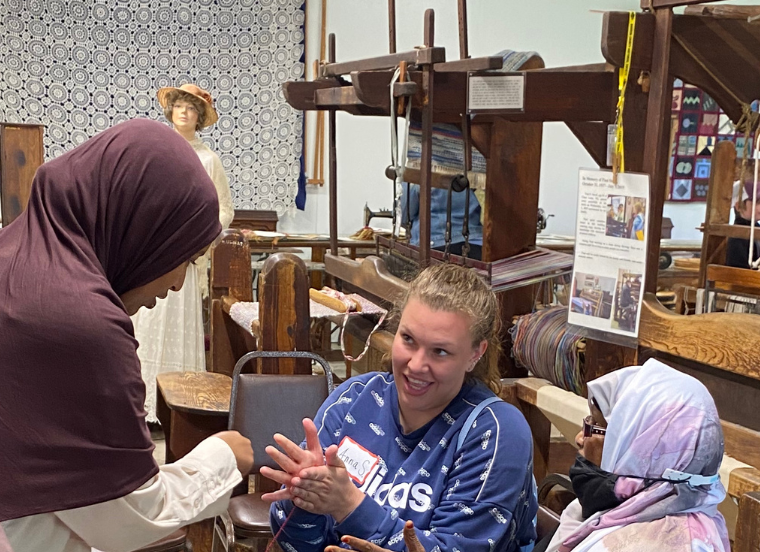
“Interwoven Roots and Routes: Somali and Scandinavian Heritage Events in Barron County” intercultural field trip for local schools at Pioneer Village. This event was funded in part by a grant from WI Humanities. Photo by Chrissy Widmayer.
